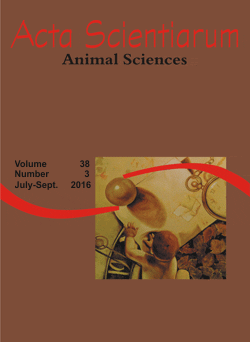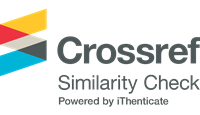<b>Aquatic microbiota diversity in the culture of Nile tilapia (<i>Oreochromis niloticus</i>) using bioflocs or periphyton: virulence factors and biofilm formation
Abstract
The following research isolated and identified the main bacterial groups present in the culture of juvenile Nile tilapia in the presence of bioflocs and/or periphyton. The strains were also tested for the production of exoenzymes, indicative of potential virulence factors, and ability to form biofilm. The water samples were taken from tilapia cultured in the presence of bioflocs (T1), in the presence of bioflocs and periphyton (T2), from traditional culture (T3) and from culture in the presence of periphyton (T4). In the growth and selection of the bacterial groups, pour plate method was used, along with the following media: Plate Count Agar (PCA - DIFCO), Aero Pseudo Selective Agar (GSP - Himedia) and Nutrient Agar (AN - Merck). 46 strains were isolated in the following distribution: T1 (n = 12); T2 (n = 10); T3 (n = 14) and T4 (n = 10). Among the isolates, the most frequent genera were: Pseudomonas spp., Aeromonas spp., Staphylococcus spp., Bacillus spp., Mycobacterium spp., Micrococcus spp., and Corybacterium spp. Bacterial isolates in treatments T1 and T3 tested positive for five virulence profiles each, while those isolated from T2 and T4 for two and three virulence profiles, respectively. Treatments in bioflocs and periphyton (T2) or only periphyton (T4) yielded bacteria of less pathogenic potentials. In relation to the fish growth, T1 and T4 resulted in a higher final weight.
Downloads
DECLARATION OF ORIGINALITY AND COPYRIGHTS
- I Declare that current article is original and has not been submitted for publication, in part or in whole, to any other national or international journal.
The copyrights belong exclusively to the authors. Published content is licensed under Creative Commons Attribution 4.0 (CC BY 4.0) guidelines, which allows sharing (copy and distribution of the material in any medium or format) and adaptation (remix, transform, and build upon the material) for any purpose, even commercially, under the terms of attribution.
Read this link for further information on how to use CC BY 4.0 properly.








































